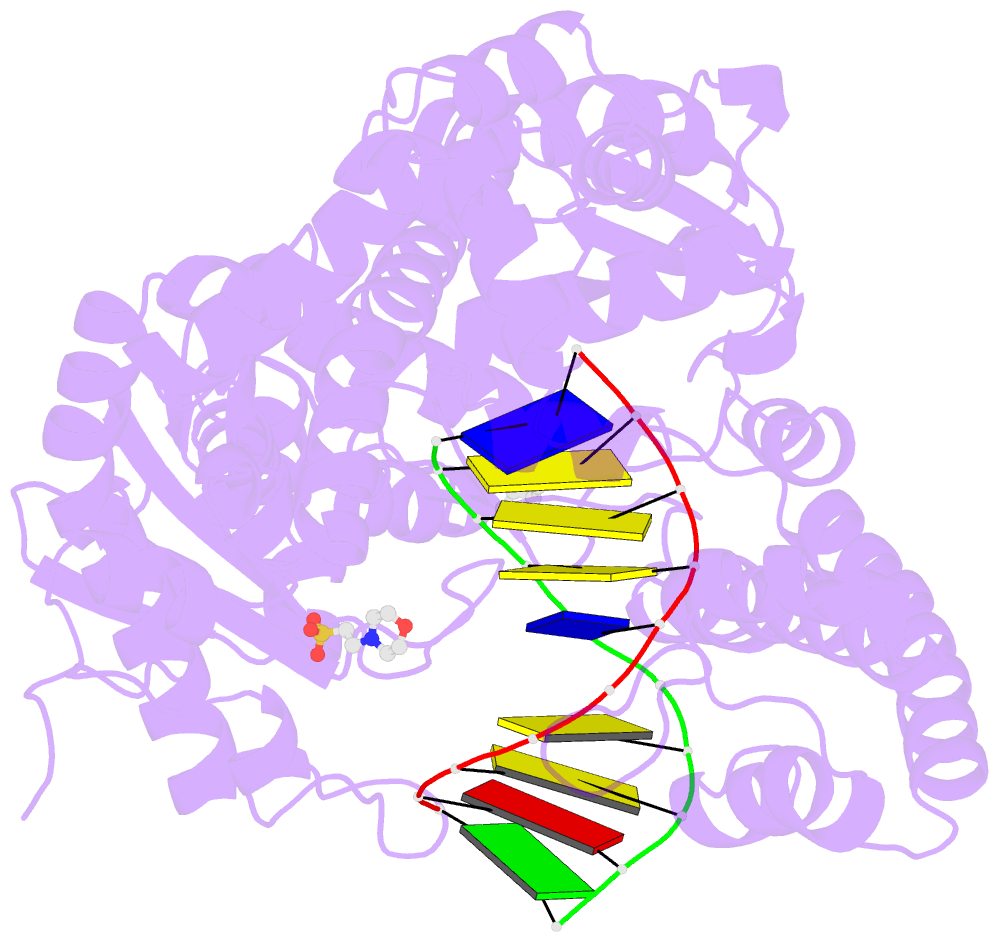Summary information and primary citation
- PDB-id
- 2xy6; SNAP-derived features in text and JSON formats;
DNAproDB
- Class
- transferase-DNA
- Method
- X-ray (2.3 Å)
- Summary
- Crystal structure of a salicylic aldehyde basepair in complex with fragment DNA polymerase i from bacillus stearothermophilus
- Reference
- Kaul C, Mueller M, Wagner M, Schneider S, Carell T (2011): "Reversible Bond Formation Enables the Replication and Amplification of a Crosslinking Salen Complex as an Orthogonal Base Pair." Nature Chem., 3, 794. doi: 10.1038/NCHEM.1117.
- Abstract
- The universal genetic code relies on two hydrogen-bonded Watson-Crick base pairs that can form 64 triplet codons. This places a limit on the number of amino acids that can be encoded, which has motivated efforts to create synthetic base pairs that are orthogonal to the natural ones. An additional base pair would result in another 61 triplet codons. Artificial organic base pairs have been described in enzymatic incorporation studies, and inorganic T-Hg-T and C-Ag-C base pairs have been reported to form in primer extension studies. Here, we demonstrate a metal base pair that is fully orthogonal and can be replicated, and can even be amplified by polymerase chain reaction in the presence of the canonical pairs dA:dT and dG:dC. Crystal structures of a dS-Cu-dS base pair inside a polymerase show that reversible chemistry is possible directly inside the polymerase, which enables the efficient copying of the inorganic crosslink. The results open up the possibility of replicating and amplifying artificial inorganic DNA nanostructures by extending the genetic alphabet.





